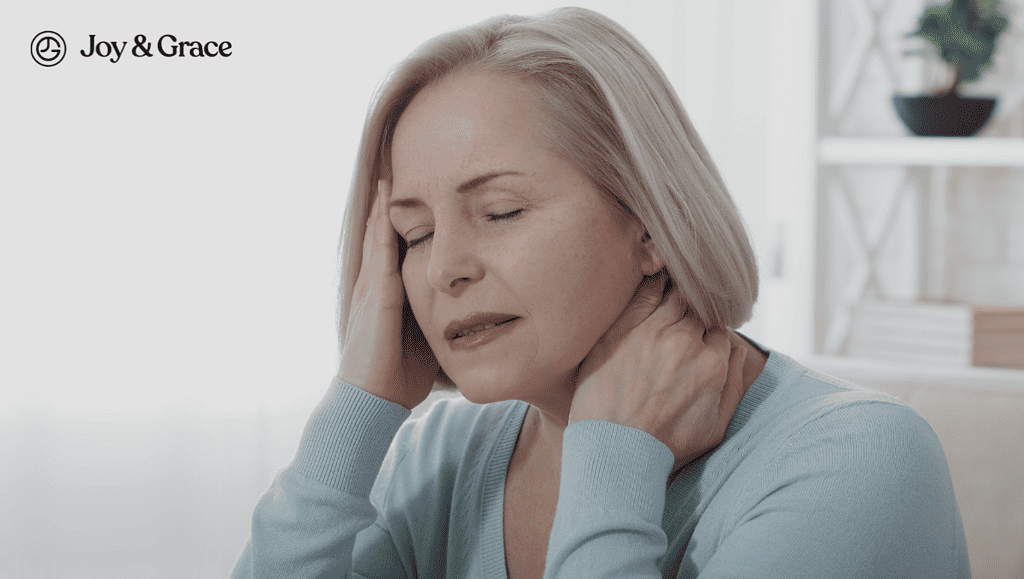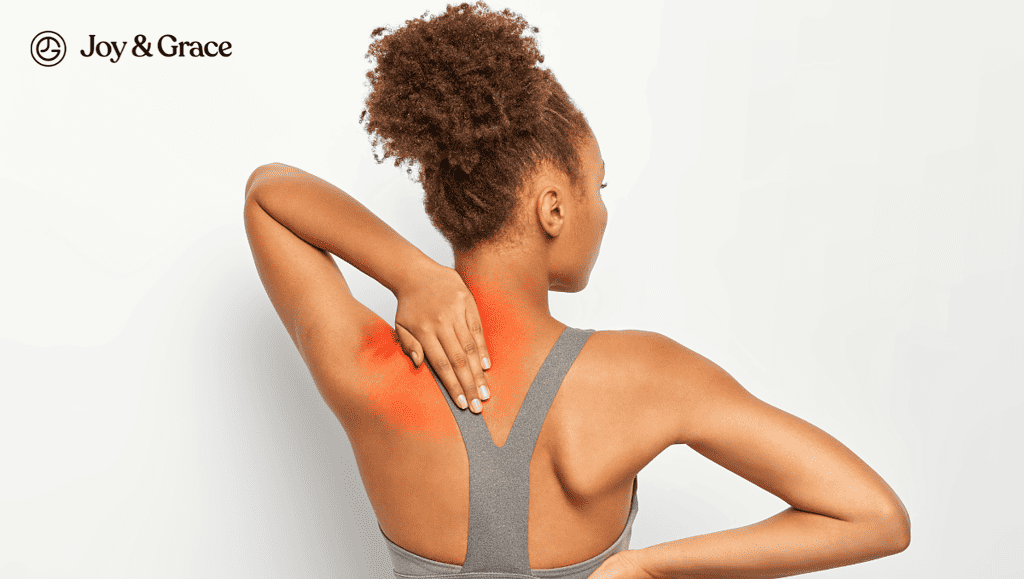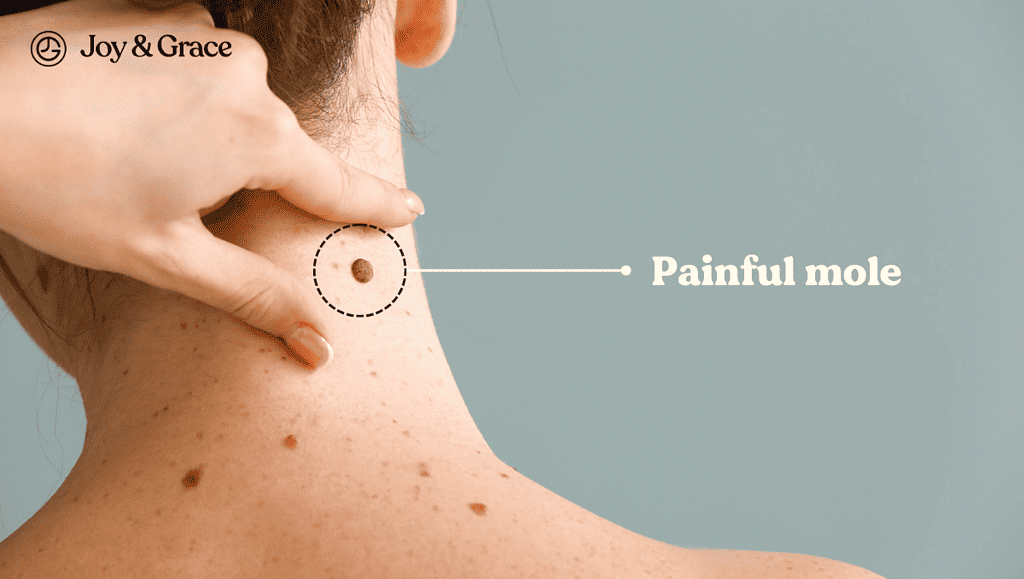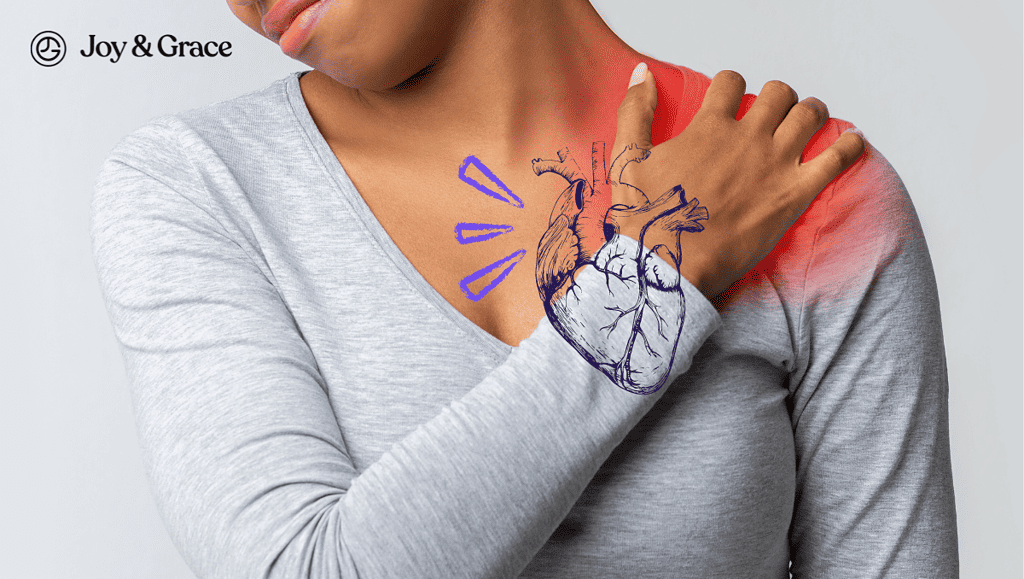Imagine dealing with a headache and neck pain at the same time—it sounds like a nightmare, right? Neck pain and headaches can sometimes be so closely interlinked that they may feel like one continuous discomfort. But the good news is that you can break this cycle of discomfort. You can obtain relief from neck pain and headaches.
Whether due to an overworked neck or just the emotional stress of daily life, we will explore some everyday remedies to help reduce your pain.
Are Neck Pain And Headaches Related?

Absolutely. It's common for people with neck pain to also have headaches.
According to a study from 2015, up to 85.7% of adults with primary headaches have neck pain. Meanwhile, in another study among adolescents, neck and shoulder pain was found to occur with headaches in 48-72% of the cases.
This connection between neck pain and headaches is thought to be mainly due to the complex network of nerves between your neck and head. Specifically, the connection lies in the “trigeminocervical” nucleus.
This nucleus receives signals from different sources, like the first three bones in our neck (C1-C3), the blood vessels in our head, and the trigeminal nerve with branches that reach our face and jaw. Any irritation, inflammation, or injury in these areas will likely result in neck pain or headaches.
When inflammation or strains on the neck occur, it may result in headaches. Several types of headaches result from or cause neck pain. We’ll explain each one just after a bit.
However, it's important to also note that neck pain and headaches can also occur independently of each other. Sometimes, they may simply be a coincidence due to the fact that both conditions are very common.
What Causes Pain in the Neck and Headaches?
In most cases, neck pain and headaches are usually harmless and are caused by the following:
- Stress
- Poor posture
- Dehydration
- Hangovers
- Caffeine withdrawals
However, if you aren’t perpetually stressed out, have the posture of a supermodel, toned down on the coffee, and laid off the alcohol but still suffer from headaches and neck pain, there’s a good chance your pain is from a medical condition.
We mentioned “primary headaches” earlier, and this is because headaches can be differentiated into either primary or secondary headaches. There are numerous headaches. Some headaches can cause neck pain, while others may result from neck pain.
Furthermore, some types are more serious than others, and treatment may depend on whether it’s a primary or secondary headache.
Here are the types of headaches that may cause neck pain:
Primary Headaches

A primary headache occurs when the headache itself is the main problem. Primary headaches are not caused by an underlying medical condition or an injury but are considered separate.
While primary headaches can cause neck pain, it is not a defining characteristic of these conditions. The pain is usually localized to the head but can radiate to the neck and shoulders.
Common types of primary headaches that can be accompanied by neck pain include:
- Migraines
Migraine headaches often involve severe pain on one side of the head and may be accompanied by neck pain or stiffness.
- Tension headaches
These are common headaches caused by muscle tension and stress. Tension headaches often cause pain in the neck and back of the head. In fact, many people with tension headaches describe their pain as “a heavy weight on my head” or “a heavy weight on my neck and shoulders."
- Occipital neuralgia
Occipital neuralgia can either be a primary or secondary headache. It’s characterized by intense shooting pain in the back of the head and neck. It occurs when the occipital nerves, which run from the spinal cord through the scalp, become inflamed or injured.
Secondary Headaches

Secondary headaches, on the other hand, are symptoms of an underlying medical condition or an injury. Unlike primary headaches, secondary headaches often present with additional symptoms related to the underlying cause, such as fever, neurological changes, or abnormal physical findings.
Neck pain can be a common feature of secondary headaches, especially when the underlying cause affects the structures in the neck.
These headaches can be attributed to various causes, such as:
- Cervicogenic headaches
Cervicogenic headaches are a type of headache that originates from the neck or cervical spine. They can cause pain that radiates to the head, often affecting one side. They can result from: - Meningitis
Meningitis is an inflammation of the protective membranes (meninges) surrounding the brain and spinal cord. While headache is a common symptom of meningitis, neck pain is also frequently present.
The neck pain can be severe and may be accompanied by stiffness, making it difficult to bend the neck forward.
- Cervical Artery Dissection
Cervical artery dissection refers to a tear or injury in the inner lining of the cervical arteries, which are the blood vessels that supply the brain. This condition can cause a sudden onset of severe headaches and neck pain.
- Temporomandibular joint (TMJ) disorders
Problems with the jaw joint, known as TMJ disorders, can cause pain in the jaw, face, and neck, as well as headaches.
- Sinusitis
Inflammation or infection of the sinuses can cause pain and pressure in the face, which can sometimes radiate to the neck and cause headaches.
How Can I Stop Neck Pain And Headache?

If you’re dealing with these two burdens—neck pain and headaches—you're likely desperate for relief. Thankfully, you're not alone, and the solutions are plenty. Let's dive straight into it!
- Ergonomics for the Win
Let's start by fixing your workspace. Adjust your chair and monitor to the correct height so you're not straining your neck. No more looking like a bobblehead! If you're constantly glancing down at papers, get a stand to bring them up to eye level. Your neck will thank you.
- Stand Tall, Feel Great
Your posture matters more than you think. Stand up straight: imagine you have a string at the top of your head, and you're pulling the string upward. Sit with proper support and avoid slouching forward.
- Sleep Tight, Pain-Free Nights
Getting a good night's sleep is crucial. According to a study, poor sleep can increase the frequency and intensity of headaches in patients with migraines.
Choose a pillow that supports your neck and keeps your head level. If your head keeps sinking into the mattress, it's time for a pillow upgrade. Stick to a sleep schedule and wind down before bed for some quality shut-eye.
- Get Moving and Grooving
Exercise isn't just for gym buffs! It can work wonders for your neck pain and headaches too. Gentle activities like yoga and stretching help relieve those nagging aches.
- Hydration is key
Don't forget to stay hydrated throughout the day. Dehydration can contribute to muscle tension and stiffness, and the neck muscles are no exception. Keep a water bottle nearby and make it a habit to drink an adequate amount of water to keep your body hydrated. Your neck will appreciate the added moisture. - Knead Away the Tension
Who doesn't love a good massage? Treat yourself to some muscle relaxation. Apply gentle pressure to your temples or forehead with your fingertips. A neck massage can work wonders too.
If you're feeling fancy, book a session with a licensed massage therapist or chiropractor specialist who knows their way around neck pain.
- Stress Less, Feel Better
Keep those stress levels in check with relaxation techniques like:- Deep breathing
- Meditation
- Enjoyable hobbies
- Hot or Cold? Take Your Pick
Heat or cold therapy can be your knight in shining armor, depending on the type of headache. According to a study from 2013, applying an ice pack to the neck reduced pain in patients with migraines.
When Should I Go To The Doctor?
If you're experiencing severe or persistent headaches and neck pain, it's generally a good idea to consult a health care provider for an accurate diagnosis and appropriate treatment plan.
Additionally, you may want to seek medical attention if you experience any of the following symptoms along with your headache and neck pain:
- High fever
- Stiff neck and difficulty moving your head
- Nausea or vomiting
- Blurred vision or other changes in vision
- Weakness, numbness, or tingling in the arms or legs
- Severe headache that comes on suddenly ("thunderclap headache")
- Headache following a head injury
Depending on your condition, your doctor may recommend the following:
- Physical therapy
- Stronger medications like corticosteroids
- Surgery
Takeaway
Neck pain and headaches often go hand in hand. Both of them can interfere with your daily activities and reduce your quality of life if not treated.
Primary headaches, such as migraines and tension-type headaches, can cause neck pain. Meanwhile, secondary headaches resulting from underlying medical conditions or injuries may also involve neck pain.
There are easy ways to relieve pain from both headaches and neck pain. These include:
- Adopting ergonomic practices
- Maintaining good posture
- Getting proper sleep
- Engaging in gentle exercises
- Practicing stress-reduction techniques
- Applying heat therapy or cold therapy
However, if the pain is severe and is accompanied by other symptoms, seek medical care immediately. Headaches and neck pain can also be symptoms of severe medical conditions and may require urgent treatment.















